Have you ever wondered what it would feel like to camp in foggy weather? Imagine waking up, stepping outside your tent, and seeing everything wrapped in a foggy veil—it feels like you’ve stepped into a scene from a storybook. Camping in foggy weather isn’t your typical adventure; it’s an entirely different atmosphere, with some mysterious, serene, and a little bit of horror vibes.
But before you dive into this dream-like experience, be prepared for the unique challenges that lie within the mist. Camping in foggy weather is about more than just beauty—it’s a journey filled with surprises. So, are you ready to embrace the mystery?
Table of Contents
First of all, should we camp in the foggy weather or not?
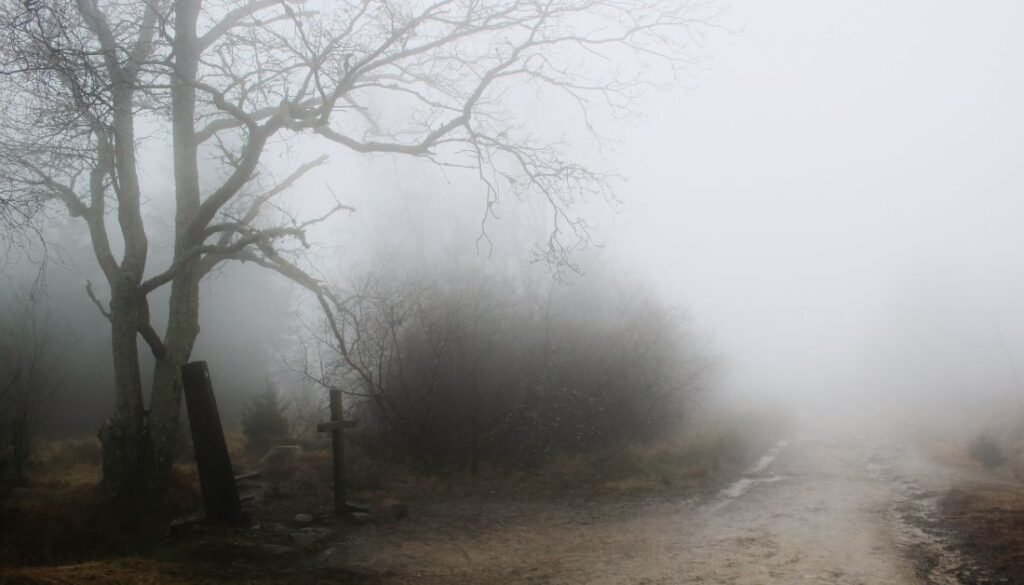
Honestly, it depends on what you’re looking for. Foggy weather has its own wild, mysterious vibe—like the whole world is wrapped in this quiet, secretive blanket.
Imagine when you wake up, unzip your tent, and you see this soft, misty landscape stretching out in front of you. There’s something almost magical about it. If you’re up for a peaceful, kind of eerie experience, it’s like stepping into another world.
But, let’s be real here—fog camping also has some challenges. You’ll have to deal with dampness, limited visibility, and, in some cases, a pretty bone-chilling cold. Things can feel a little claustrophobic when the fog closes in, and it’s easier to miss track of where you are. So, if you’re not comfortable navigating without a clear view, or if you just want an easygoing, sunny camping trip, then I suggest you skip it this time.
A Brief Overview of What Makes the Foggy Weather Camping Unique
Camping in foggy weather is truly a one-of-a-kind experience. There’s something so unique about being surrounded by mist—like you’re cut off from the rest of the world, and it’s just you, nature, and this thick, quiet fog. The usual sights are softened, the trees, rocks, and landscape all taking on a ghostly, almost mystical quality.
With fog, sound changes, too. Everything seems muted, and voices don’t carry as far, adding to the sense of isolation and intimacy with the environment.
It’s a calm and eerie beauty you won’t get in sunny or even rainy weather.
Challenges You Might Face During Foggy Weather Camping
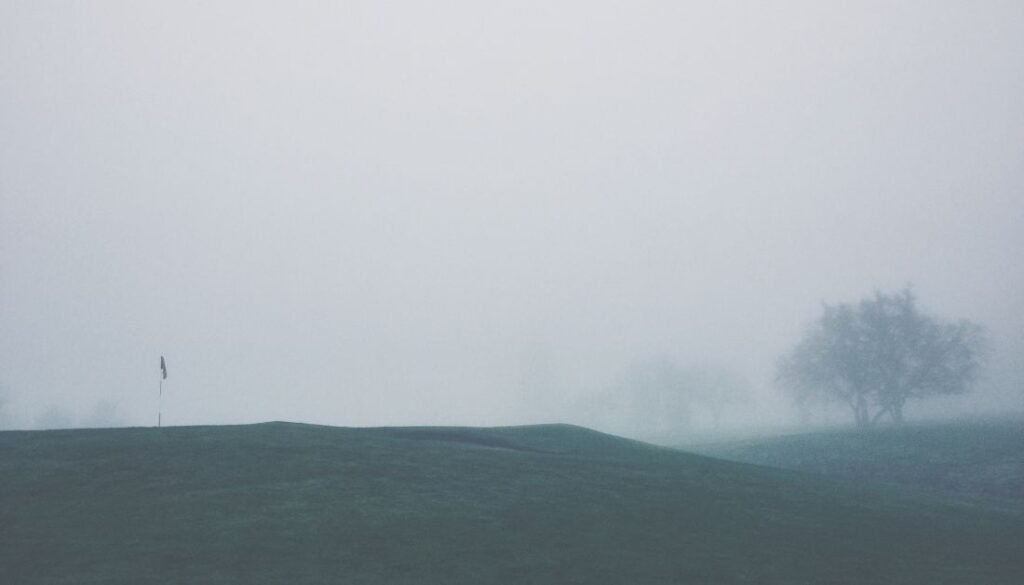
Camping in foggy weather has its own set of challenges that can make it tough, even for seasoned campers.
First off, there’s visibility—fog can seriously limit your view, which makes it harder to navigate on trails or even find your way around the campsite.
Then there’s the dampness. Fog brings a lot of moisture with it, so even if it’s not raining, everything feels wet. Your clothes, tent, and gear can all get damp, which isn’t just uncomfortable—it can make it harder to stay warm. In colder temperatures, that chill can get right into your bones, making it easy to get cold fast, even if you thought you packed warmly.
And let’s not forget about fire and cooking! Starting a campfire in such a smoggy environment can be a challenge, and keeping it going in heavy fog can require constant tending. For anyone planning to cook over an open flame, it can be frustrating to deal with wood that doesn’t want to catch or keep burning.
So while camping in foggy weather is beautiful, it’s important to be prepared for these unique obstacles. But if you’re ready to face these challenges, it’ll make for a memorable adventure!
Choosing the Right Campsite in Foggy Weather
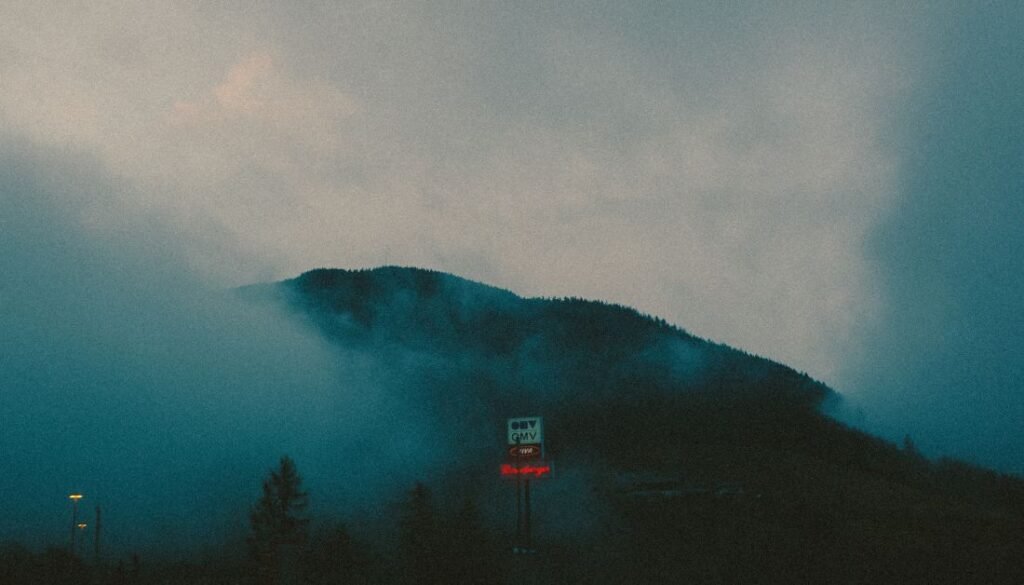
Choosing the right campsite in hazy weather can make all the difference in your experience and safety. Fog tends to settle in low-lying areas, like valleys, so it’s usually best to avoid those spots if you can. Try to find a campsite on slightly higher ground, where the fog is less likely to linger and dampness won’t be as intense.
Also, watch out for spots near dangerous terrain, like cliffs or steep slopes. With low visibility, it’s easy to misjudge distances, and in dense fog, these areas become risky fast. Look for a flat, open area where you have room to move around without worrying about hidden hazards.
Position your tent strategically to shield yourself from the wind and dampness that often come with foggy weather. Setting your tent facing away from the wind will help reduce the amount of moisture blowing in and keep you a bit warmer. If you can find natural barriers like trees or rocks, they can add an extra layer of protection against the elements—but make sure they’re stable and don’t pose a risk of falling.
Staying Warm and Dry
Staying warm and dry in foggy weather is essential because humidity can chill you to the bone if you’re not prepared.
The first rule? Layer up smartly! Start with a moisture-wicking base layer to keep sweat off your skin, followed by insulating layers like fleece or wool to trap warmth. Top it off with a waterproof, windproof jacket to keep the fog’s dampness out. Avoid cotton, as it traps moisture and takes forever to dry.
Inside your tent, ventilation is key. It might sound strange, but a bit of airflow will help reduce condensation, so you’re less likely to wake up to damp sleeping bags and gear. If possible, crack the tent windows or vents slightly to let moisture escape.
Another tip? Pack hand and foot warmers. These little packs of warmth are lifesavers on chilly, foggy nights. Slip them into your socks, gloves, or sleeping bag for extra coziness. And if you can, invest in a sleeping bag that’s rated for colder temperatures—staying warm at night will make a huge difference in your energy and comfort the next day.
Lastly, keep a designated spot for wet gear. Leave muddy boots and damp outer layers just outside the tent or in a vestibule. This keeps the inside of your tent dry, which is vital for staying warm. A little prep can go a long way in foggy conditions!”
Navigating in Low Visibility
Navigating in low visibility, like rainy and smoggy weather, can be tricky, but with the right strategies, you can still feel confident finding your way.
First, go old school with a map and compass. GPS devices are helpful, but dense fog can interfere with their accuracy, especially if you’re deep in the wilderness. Brush up on basic map-reading and compass skills before your trip; they’re invaluable if technology fails.
It’s also a good idea to set waypoints and use landmarks as you move around. In low visibility, it’s easy to get disoriented, so mark your trail as you go—this could be with rocks, sticks, or even small flags. Familiar landmarks, like distinctive trees or boulders, are great reference points. Just remember, things can look different in the fog, so choose obvious features and keep checking in on them.
Stick with your group, if you’re with others. In low visibility, it’s incredibly easy to get separated, even over a short distance. Decide on a formation or pattern for moving, and agree to stop regularly to regroup.
Finally, be patient and take it slow. Rushing in fog can lead to accidents. Move carefully and stay aware of your surroundings. Give yourself time to make clear decisions, and don’t hesitate to backtrack if anything feels off. Fog can make even a familiar path feel unfamiliar, but with caution and a little patience, you’ll navigate it like a pro.
Cooking and Fire Safety
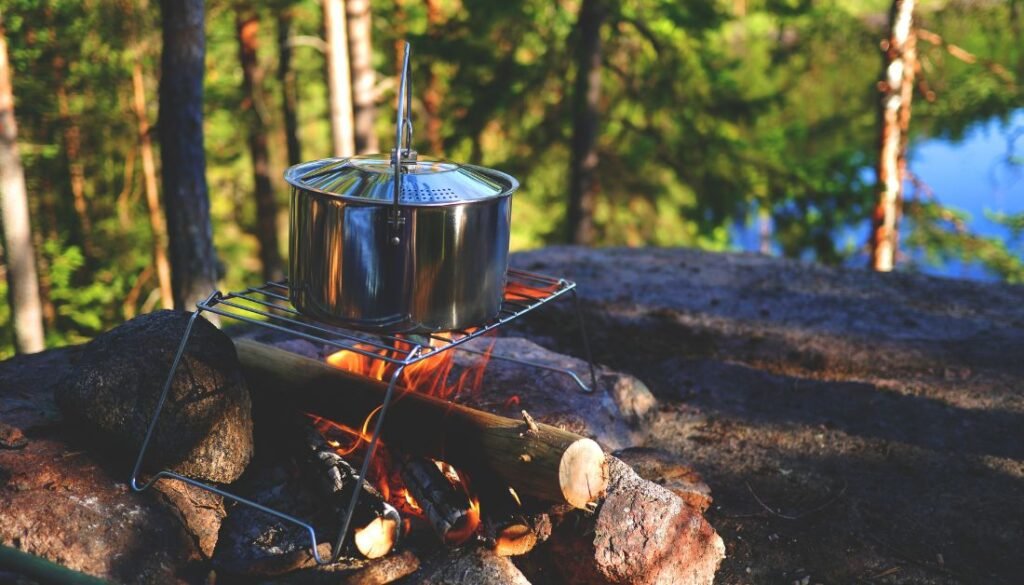
Cooking and fire safety can be a bit challenging when camping in foggy weather, but with the right precautions, you’ll stay safe and warm.
First off, starting a fire can be tricky in damp conditions. Gather dry wood or use a fire starter if you have one—keeping a few pieces of dry tinder in a sealed bag before your trip can make all the difference. Look for wood that’s a bit off the ground or under trees, as it’ll likely be less damp.
Once your fire is going, keep it small and manageable. Dense fog can make it harder to judge the size and spread of a fire, and wet ground can make embers unpredictable. Plus, with reduced visibility, there’s a higher risk of accidentally bumping into a larger fire, especially if you’re moving around camp.
When it comes to cooking, camp stoves are often your safest bet in foggy weather. They’re easier to light and control, and you don’t have to rely on dry wood to keep your meal going. Plus, a portable stove allows you to set up a cooking area away from the tent, keeping you safe from any potential carbon monoxide buildup.
Lastly, always extinguish your fire fully before going to bed or leaving camp. In foggy conditions, embers can smolder longer than expected, and it’s hard to monitor them in low visibility. Douse the fire thoroughly with water and stir the ashes to ensure everything’s out.
With a bit of caution and preparation, you’ll be able to cook safely and enjoy the warmth without worries in the fog!
Capturing the Beauty of Foggy Weather
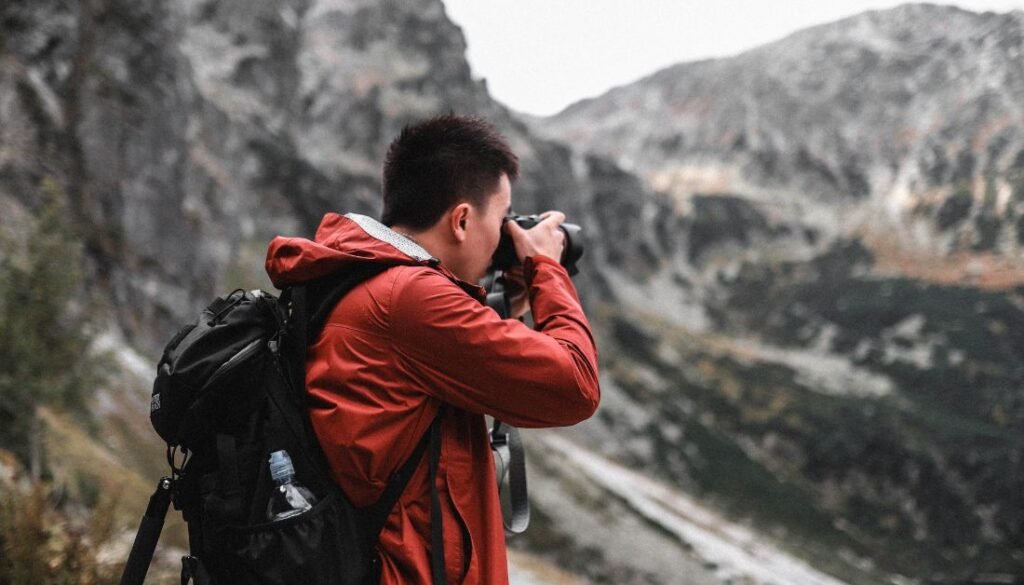
Capturing the beauty of foggy weather is like trying to freeze a moment in a dream—mysterious, quiet, and full of mood. The smog gives everything a soft, almost ethereal glow, turning even the most ordinary scene into something magical.
If you’re looking to take photos, focus on the mood of the moment. The fog creates a natural filter, softening harsh lines and giving everything a dreamy, almost otherworldly look. For stunning shots, shoot during the early morning or late afternoon, when the light is softer and the fog is thickest. That’s when the mist wraps around trees, rocks, or hills, giving you that almost cinematic feel.
To get the best out of the fog, play with contrast and shadows. The fog often leaves parts of the scene shrouded in mystery, so try to capture the contrast between what’s visible and what’s hidden. Trees or mountains peeking out from behind the mist can make for some striking, dramatic compositions.
For those with a more artistic eye, use the fog to create depth. Shots with layers of fog rolling over hills or valleys create a sense of mystery and distance that makes your photos feel alive. Black and white photography can also work wonders in foggy conditions, turning the subtle greys and silvers into rich tones that emphasize the stillness and beauty of the fog.
Lastly, don’t forget to protect your camera gear. Fog can easily settle on your lenses, so be prepared to clean them often, and keep your equipment stored safely when not in use to avoid dampness.
Conclusion
Camping in foggy weather is an adventure like no other—quiet, mysterious, and full of beauty. It’s a chance to experience nature in its raw, dreamlike form, where the world feels a little more magical. But with its unique charm comes a set of challenges you can’t ignore. From navigating through limited visibility to staying warm and dry in damp conditions, foggy weather requires extra preparation and caution.
So, if you’re ready to face the fog, embrace the adventure with the right gear, mindset, and a healthy respect for its unpredictable nature. With the right preparation, a foggy camping trip can be an unforgettable experience that leaves you with stories of a world few ever truly see.
Have you ever camped in foggy weather? What was your experience like, and do you have any tips or stories to share?
We’d love to hear your thoughts in the comments!
You May Also Like
How do I Prepare For Winter Camping
Simple Tricks to Keep Camping Gears Dry – Rainy Camping
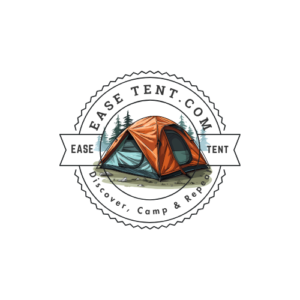
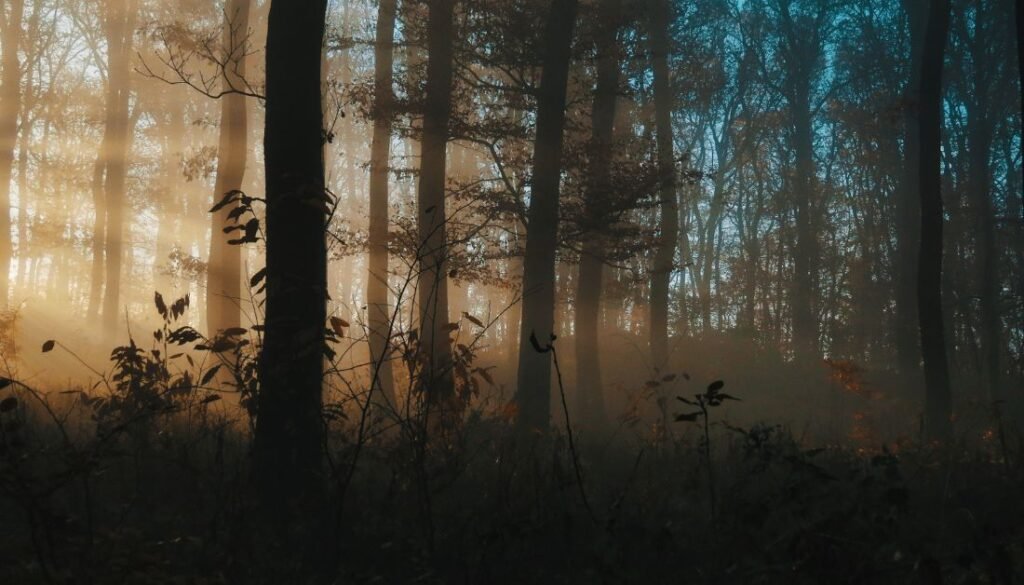
Can I ask a quick question about your site? https://google.com/?lida
Rolida
yes